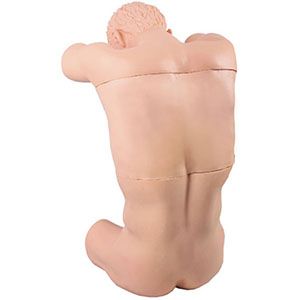
What are the success criteria for a thoracentesis training model
Article tag: Thoracic puncture training mode BIX-CK812

After completing the training, trainees should be able to independently complete the entire puncture process and understand the key anatomical landmarks and operational precautions of thoracentesis. Through repeated training, the thoracentesis model not only helps learners accumulate tactile experience, but also enhances their risk awareness and confidence in clinical operations, laying a solid foundation for actual patient operations.
...
The success criteria of the thoracentesis training model are mainly used in medical teaching and skills assessment, helping trainees master safe and standardized puncture operation procedures and enhance their clinical practice abilities.
First of all, before operation, it should be confirmed that the model is complete and the structure of each layer is clear, including the skin layer, muscle layer, ribs, pleura and the simulated thoracic space. Trainees need to correctly select the puncture site, usually at the appropriate position in the intercostal cavity, and strictly follow the aseptic operation norms.
During the operation process, the criteria for success include
First, after the needle enters the model's thoracic cavity, it can smoothly extract "thoracic fluid" or gas, simulating a real puncture effect.
Second, the operation Angle and depth should be consistent with the human anatomical structure to avoid puncturing the ribs or damaging the virtual pleura.
Thirdly, the technique is standardized and the operation is smooth. It can accurately identify the changes in puncture resistance and reflect the tactile sensation of the needle tip passing through different tissue layers.
Fourth, after puncture, the needle should be removed and local treatment should be carried out correctly to keep the model intact and prevent liquid overflow or damage to the structure.
After completing the training, trainees should be able to independently complete the entire puncture process and understand the key anatomical landmarks and operational precautions of thoracentesis. Through repeated training, the thoracentesis model not only helps learners accumulate tactile experience, but also enhances their risk awareness and confidence in clinical operations, laying a solid foundation for actual patient operations.

Marketing Center
Hong Kong, ChinaProduction Base
Shanghai, ChinaProducts
Contact Us
 Address: Hong Kong, China
Address: Hong Kong, China
 Phone:+86 19937901373
Phone:+86 19937901373
 Email:sophia@adahealthy.com
Email:sophia@adahealthy.com
 Mobile:+86-0379-65160607
Mobile:+86-0379-65160607








